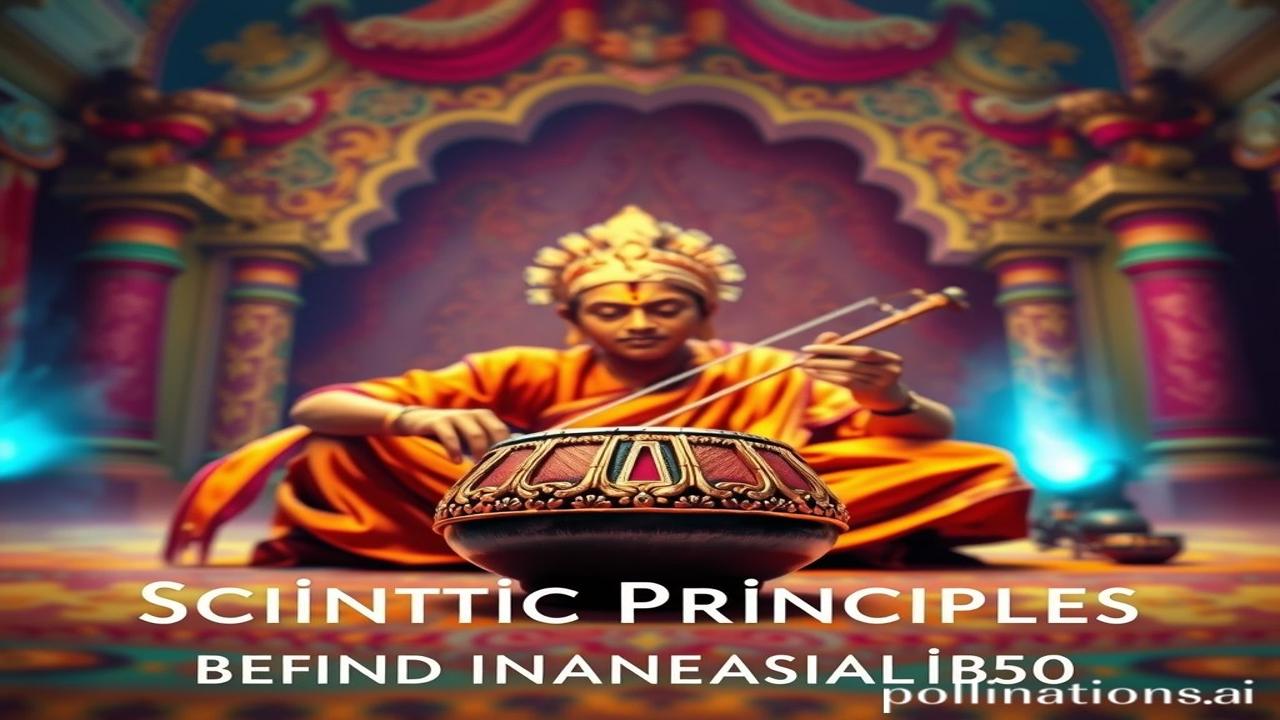Sangeet aur Vigyan: When Ragas Meet Resonance
Kabhi socha hai, jab ek Panditji apni aankhein band karke Sitar bajaate hain, toh usmein sirf dhun hi nahi, balki koi gehra vigyan bhi chhupa hota hai? Waqt ki dhool mein dabi, Indian Classical Music sirf manoranjan nahi, yeh toh ek complex formula hai, jismein science aur spirituality ek saath dance karte hain. Come, let’s peel back the layers of this ancient art form and uncover the scientific principles humming beneath the surface.
Indian Classical Music: A Historical Symphony
Indian Classical Music, a legacy spanning millennia, isn’t just a collection of notes; it’s a living, breathing history. Its roots lie in the ancient Vedic traditions, evolving over centuries through the contributions of countless musicians, saints, and philosophers. The Natyashastra, dating back to around 200 BC – 200 AD, is one of the earliest treatises that delves into the theory of music, dance, and drama. Over time, two main branches emerged: Hindustani classical music (primarily North India) and Carnatic classical music (primarily South India).
What sets it apart is its emphasis on Ragas, melodic frameworks that evoke specific moods and emotions. Think of a Raga as a musical landscape – each has its own unique structure, rules, and intended feeling. And then there’s Tala, the rhythmic cycle that provides the heartbeat of the music. This isn’t just random rhythm; it’s a complex mathematical structure that dictates the tempo and flow. It’s why Indian classical music resonates so deeply – because it speaks to something fundamental within us, something beyond just simple entertainment.
Echoes of Daily Life: The Musicians and Their Music
Imagine a bustling courtyard in medieval India. Ma Saraswati puja ho rahi hai. Pandit Vishnu Digambar Paluskar, unke haathon mein Tambura, aankhein band. The air smells of incense and jasmine. He begins to sing a Raga, early in the morning, tailored for the time of day. The sounds resonate with the entire surrounding. His disciples listen intently, their fingers itching to replicate the nuances on their instruments – the Sitar, the Sarod, the Tabla.
Or consider the Carnatic musicians of South India. Ma Rukmini ne aaj naye kapde pehne, kyunki mandir mein utsav tha. She carefully tuned her Veena, each string representing a different note. The priest chanted mantras, and then she began to play. Her music filled the temple, a testament to the devotion and the intricate knowledge passed down through generations. It wasn’t just about playing notes; it was about creating an experience, a connection with the divine. These musicians, both Hindu and Muslim, both rich and poor, were artists and scientists, keepers of a tradition that blended aesthetics and deep understanding of the natural world.
Cultural Significance: A Thread in the Tapestry of Bharatiyata
Today, Indian Classical Music continues to be a powerful force in shaping our cultural identity. From the soulful renditions of Ragas during temple ceremonies to the modern fusion experiments blending classical elements with contemporary genres, its influence is undeniable. We see its presence in Bollywood soundtracks, in classical dance performances, and in the countless hours dedicated to learning and preserving this art form by passionate musicians across the country.
It’s a connection to our past, a reminder of our heritage, and a celebration of our identity. It reminds us of our “Bharatiyata” – the spirit of India, which is woven with threads of art, culture, philosophy, and devotion. It is also a constant reminder of the syncretic nature of Indian culture, highlighting the contributions of diverse communities in its evolution.
Fun Fact: The Healing Power of Ragas
Log samajhte hain ki music sirf entertainment hai, lekin asli sach yeh hai ki specific Ragas have been scientifically proven to have therapeutic effects. Studies have shown that certain Ragas can lower blood pressure, reduce anxiety, and even improve sleep quality. This isn’t just hearsay; the resonant frequencies and specific note combinations within these Ragas can have a tangible impact on our physiological state. Isn’t that amazing? The ancients knew things about the human body and the power of sound that we are only beginning to rediscover through modern science.
Visual & Sensory Layers: The Essence of the Raga
Imagine yourself in a dimly lit concert hall. The air is thick with anticipation. The scent of sandalwood hangs heavy. A lone musician walks onto the stage, sits cross-legged, and tunes their instrument. The first notes resonate – a deep, haunting sound that fills the space. You close your eyes and allow yourself to be transported. You feel the vibrations through your entire body. You see colours swirling in your mind’s eye, each note painting a different shade. You are no longer just listening; you are experiencing the Raga.
Closing Insight: The Resonance of Existence
Indian Classical Music is more than just notes and rhythms. It is a reflection of the universe, a microcosm of the cosmos. It’s a reminder that everything in existence is interconnected, vibrating in harmony.
As the ancient Shloka says, “नादब्रह्म”. Naad Brahm, means sound is God. It is the ultimate reality, the source of all creation. And in the intricate melodies of Indian Classical Music, we find a glimpse of that divine harmony.
